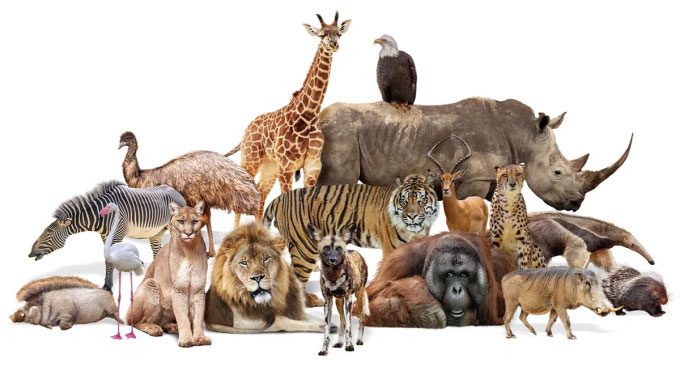Currently, there are about 8 billion people, which is just a small fraction compared to the number of individuals that have ever existed, not to mention the countless animals that have lived on Earth.
Estimating the total number of animals that have ever lived on Earth is extremely challenging. According to David Jablonski, a geophysicist at the University of Chicago, perhaps the easiest way to begin is by estimating the total number of species.
According to the IUCN Red List, approximately 2.16 million animal species have been formally described as of 2022. However, a study published in the journal Science in 2013 suggested that 20% of these might be duplicates, recorded by multiple scientists. Assuming this estimate is accurate, the actual number of species is around 1.7 million.

The number of animals that have lived on Earth. (Photo: adogslifephoto/Getty).
This number is not fixed. Each year, researchers describe about 14,000 to 18,000 new animal species scientifically, meaning that they only have a preliminary understanding of the number of animals in the world.
In 2011, Camilo Mora, a biogeographer at the University of Hawaii, along with colleagues, presented a study in the journal PLOS Biology estimating the total number of eukaryotic species on Earth. Eukaryotic organisms are those composed of one or more cells with a distinct nucleus containing chromosomes.
The final figure they provided was around 8.7 million, of which approximately 7.7 million are animals, and half of this number are insects. This research has had a significant impact and is frequently cited to this day.
However, to determine how many animal species have existed, experts need to look deeper into the past and utilize fossil records. Life appeared on Earth about 3.7 billion years ago. Yet, the first organisms were very simple cells. Multicellular organisms did not emerge until about 2.3 billion years ago, and animals likely appeared even more recently, around 800 million years ago.
Only a few of those primitive animal species are preserved in the fossil record. This is because soft-bodied organisms are very difficult to preserve, and even for hard-bodied organisms, fossilization occurs only under certain conditions. Additionally, tectonic plates continuously and slowly stir the Earth’s surface, erasing ancient traces.
“The standard estimate is that 99.9% of all species that ever existed are extinct. But of course, that is just a rough estimate,” Jablonski states. Assuming this ratio is accurate, the total number of animal species that have ever existed would be around 770 million. So how do we calculate the total number of individuals of all animal species that have ever existed on Earth?
Earth is currently home to about 8 billion people, 130 billion other mammals, 428 billion birds, 3.5 trillion fish, and 10 quintillion insects. Assuming that the current richness is relatively stable, we can speculate about the numbers with some degree of certainty. For example, if there are currently 3.85 million insect species on Earth, corresponding to 385 million species in the past, the number of individuals would be 3.85 x 1027.
Due to the immense number of insects, this figure may not be too far off from the total. Thus, it can be roughly estimated that, including arthropods, invertebrates, and vertebrates, around 4.5 x 1027 animals have existed on Earth.
Calculating the number of animals helps scientists understand the fundamental biodiversity of Earth and how it fluctuates. Due to climate change, deforestation, pollution, and other factors, the world is approaching a mass extinction event. Experts need to understand the baseline extinction rate to grasp the scale of the current crisis.


















































